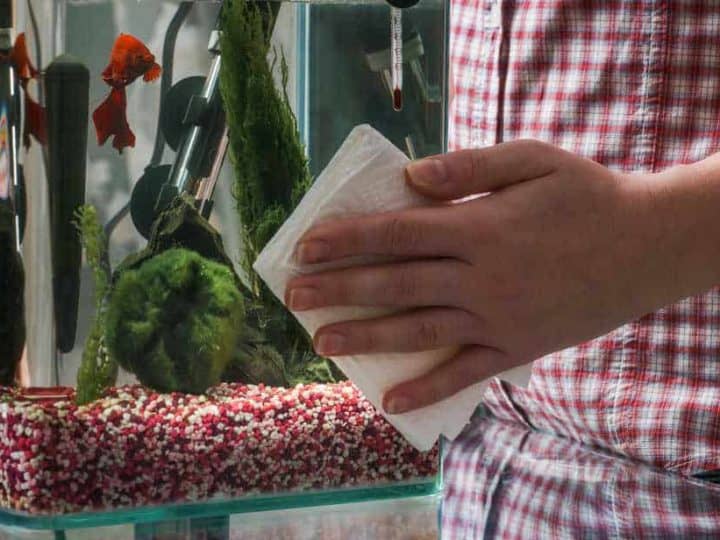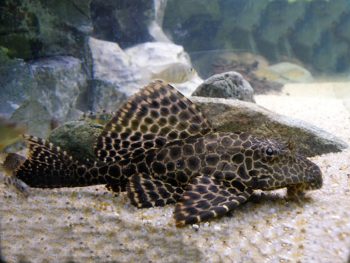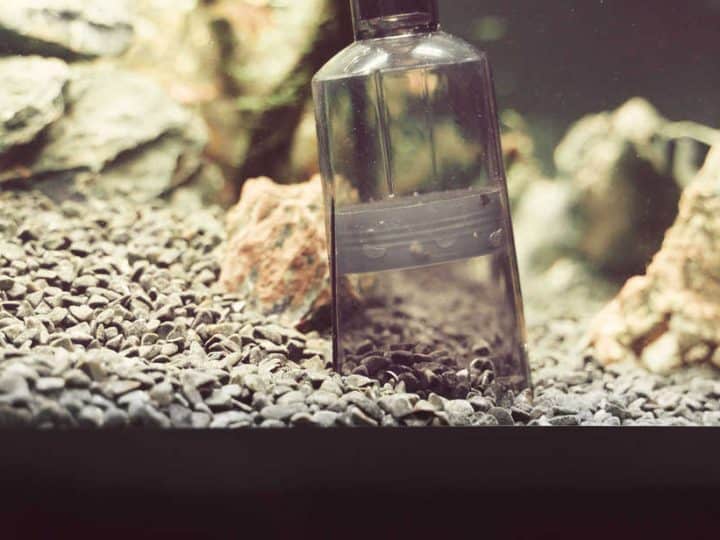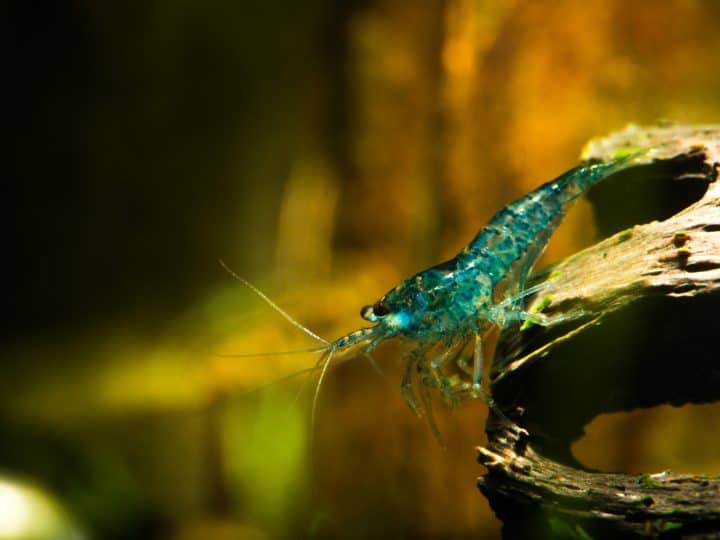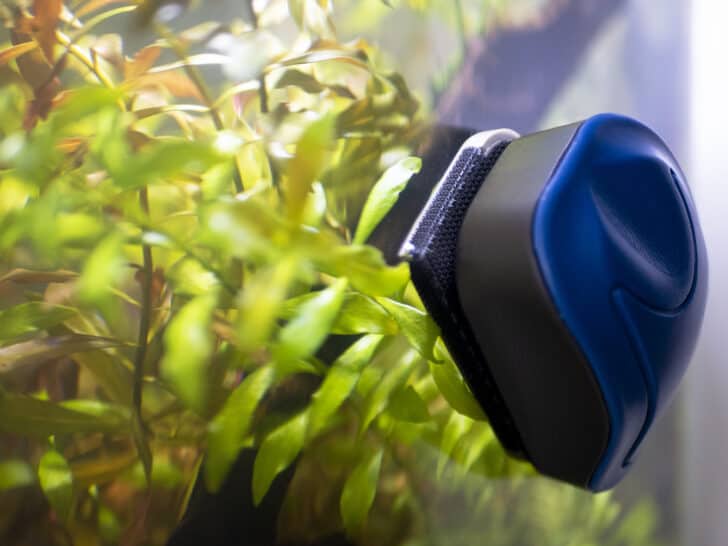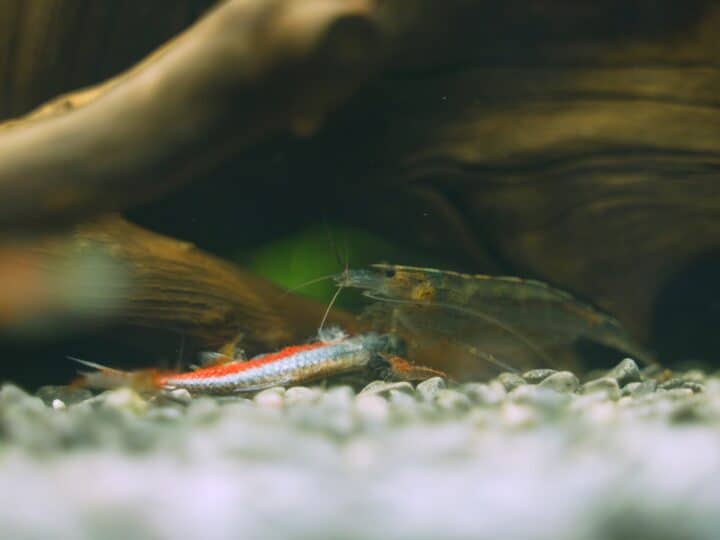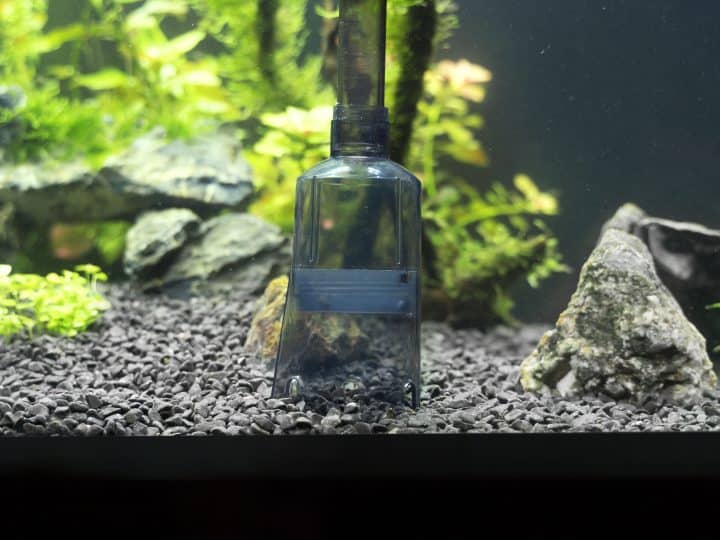I’ve been keeping many live plants in my tank for quite some years now and really struggled finding the right maintenance and cleaning “routine”. After a lot of trial and error I unearthed all the do’s and don’ts on how to clean a planted tank.
Use a gravel vacuum to remove some detritus from between plants without uprooting them. After lowering the water level, trim the plants and remove all unhealthy or dead parts of plants. There’s the opportunity to add root tabs during the cleaning process if necessary.
I’ll make sure you’ve read everything you need to know once you finished this page.
Start Cleaning with a Gravel Vacuum
Before we’re able to really get in there we need to lower the water level. The best way to do this is by using a gravel vacuum, as this allows you to utilize the flow of the siphon to remove some fish poop or other detritus. If your planted tank is still new you’ve got to be easy on them. More rigorous use of the gravel vacuum will without a doubt uproot new plants.
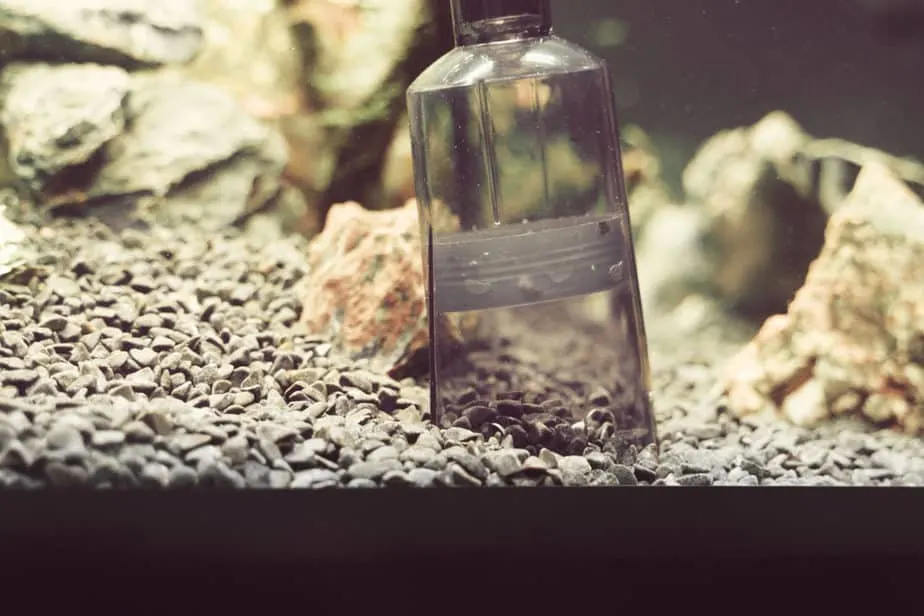
It’s useful to turn off as much of the equipment of the tank as possible. Temporarily turning off the filter makes sure you do not risk it sucking up air when the water level drops below the intake. Definitely turn off the heater as it will start to overheat as soon as the aquarium water level is lower than the thermostat of the heater. When a heater is surrounded by air it will try to raise the air temperature to tropical levels and it will start smoking.
Any powerheads as well as any CO2 supply should also be turned off. If you can keep one powerhead running it can be useful. Any stirred up detritus or other nasty stuff will remain floating in the current instead of settling down on the substrate again.
Trimming All the Greenery in Your Planted Tank
This stage will tell apart “regular” maintenance from dedicated maintenance to a planted tank. Honestly, I’ve written an entire guide on how to clean an aquarium which you can check here. However, a planted tank is different. If your plants are happy they’ll grow rapidly and you need to try and keep up.
Stem plants are notorious for reaching the top of the aquarium within a week if all their care requirements are met. They’re also easy to trip. You can use regular kitchen scissors or splurge on a breathtakingly beautiful (but inexpensive) set of aquascape tools (amazon). From experience I can say these tools are super satisfying to use and make the work easier in the process.
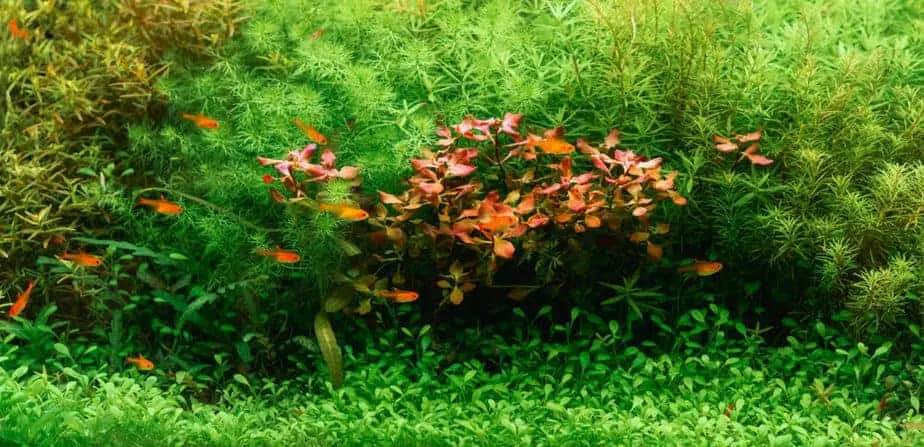
There are two ways you can trim stem plants. In the first option you cut off the top of the stem plant and leave the rest be. The second option is more work but prettier: cut off the top, remove the bottom from your tank and replant the top trimming in its place.
When using method two you won’t see where you cut the plant.
Other plants that propagate through runners, like vallisneria or small echinodorus varieties, can overgrow your tank if you let them. While cleaning your planted tank, check whether some plants are spreading to places where you do not want them to go. If this is the case, chop off the runner and either replant it or throw/give it away.
When growing carpet plants that cover the entire bottom of the tank, you’ll need to trim them too. For this I truly do recommend a proper aquascaping toolset like the one I mentioned above, for one simple reason. These sets include a dedicate pair of scissors that’s curved. The curvature allows you to trim any carpet with ease.
By the way, I’ve composed an extensive list of some of the best available carpet plants that we can grow. If you’re interested, check it out here, I’m sure you’ll love it.
Other Things to do Besides Cleaning the Glass
Cleaning the glass is an obvious aspect of any aquarium cleaning routine, so I’m sure you figured that one out by yourself. Other a little bit less obvious chores are more interesting to discuss.
The first one is checking whether any root tabs need to be replaced. You do not have to check this in your tank, but rather think back 3 months ago and determine whether you added new root tabs during this time. If a root tab is older than 3 months and the plant it’s feeding has shown great growth, it needs a new one.
Root tabs generally last around 3 months. Only plants that heavily rely on their roots for nutrients need root tabs. If you’re unsure, I’ve composed a list of plants that are root feeders which you can find here on my site.
If you have an nutritious aquarium soil that allows your plants to grow, you do not have to do as much regular maintenance. These aqua soils are a great way to feed plants for a longer period of time. Sadly, they do run out of nutrients are a while. Usually an aquarium soil lasts anywhere between 1 and 2 years. This depends on the amount of plants that you’ve been growing.
If your plant growth isn’t what it used to be, it could be that your aquarium soil has run out of nutrients. In this case, it needs to be replaced, which is as much work as it sounds. Replacing an aquarium soil involves removing everything that’s in an aquarium and adding new aqua soil. This also is the reason why many people opt for the use of root tabs.
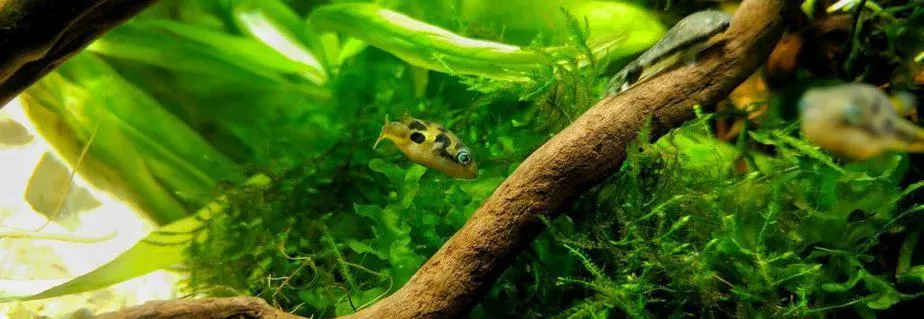
How Often Should you Clean a Planted Tank?
Now that you know all about how to clean a planted aquarium, it’s important that you do not do it too often. That’s right, a well established planted aquarium needs less maintenance that most tanks.
Plants help clean the water in your aquarium, so you do not really need to perform water chances to lower the nitrate concentration. Instead there is a different reason to perform regular maintenance. You need to check whether all plants are in good shape as dead plant matter can still cause an ammonia spike that’s putting your fish at risk.
The other reason is to trim your plants, which is obvious. Depending on the type of plant and their fitting growth rate, you need to trim your plants more or less often. It’s important to keep fast growing plants in shape as an overgrown tank can be dangerous to fish. I encourage you to read a post I’ve written a while ago all about how aquarium plants can kill fish if you’re not careful.
If you still want to clean your planted tank on a regular schedule, I would recommend doing a water change every other week. Weekly water changes are not necessary if you’ve got many plants.
Quick Tips for Cleaning a Planted Tank
- Weekly water changes of 20-30% are recommended, and make sure to keep water safe for plants and fish, which means using dechlorinated water.
- Perform regular water tests to monitor phosphates and other contaminants to ensure that water parameters remain suitable for flora.
- Make sure to keep algae under control.
- Using a gravel vacuum helps make life much easier when removing debris from tank water.
- Try to disturb plants as little as possible, particulalry rooted plants. However, you may need to wipe down the leaves if they are covered with detritus and dirt.
- Cleaning aquarium glass is made easier when you incorporate tools such as a simple sponge or toothbrush.
- Examine plants regulalry for signs of damage or ill-health.
- Make sure to clean the filter media as well, but not at the same time as doing a water change, as this can cause a decrease in beneficial bacteria.

